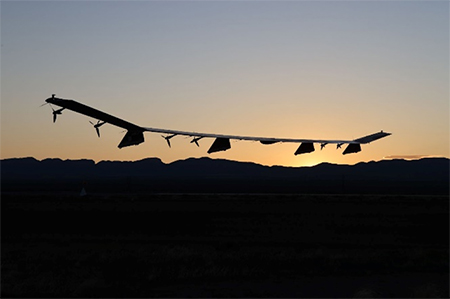SoftBank has gained exclusive rights to use Sceye’s HAPS platform in Japan
In sum – what to know:
SoftBank to launch HAPS in 2026 – The Japanese carrier will begin pre-commercial stratospheric telecom services next year, using U.S.-based Sceye’s lighter-than-air platform to improve disaster recovery and rural connectivity.
Building a 3D network for 6G – The project supports future drone communication and sky-based mobility, forming part of SoftBank’s larger goal of creating a 3D next-gen network for the 6G era.
Satellite alternative with faster response – HAPS can be deployed quicker than satellites, making them ideal for emergencies and remote areas where traditional infrastructure struggles.
Japanese operator SoftBank announced that it expects to launch pre-commercial stratospheric telecommunications services in Japan next year using High Altitude Platform Stations (HAPS).
In a release, the Japanese company also revealed it has made an equity investment in Sceye, a U.S.-based aerospace company that develops lighter-than-air (LTA) HAPS vehicles.
Under the terms of this partnership, SoftBank gains exclusive rights to use Sceye’s HAPS platform in Japan. The move is part of SoftBank’s long-term plan to build a next-generation 3D network that will support services like drone connectivity, disaster recovery and future 6G applications.
HAPS platforms operate around 20 km above Earth in the stratosphere and can provide wide-area wireless coverage. Unlike satellites, HAPS can be deployed quickly and offer faster speeds, lower latency and more flexible coverage, making them useful in emergencies and remote locations such as mountains or islands, the telco said.
SoftBank sees HAPS as a key building block of future networks, especially for sky-based mobility and uncrewed aerial vehicles (UAVs). The Japanese carrier has been investing in HAPS since 2017, focusing on heavier-than-air (HTA) platforms. Now, with the addition of Sceye’s LTA platform, it is accelerating its push toward real-world commercial deployments.
Junichi Miyakawa, president and CEO of SoftBank, said: “The stratospheric-based, wide area telecommunications of HAPS will play a key role in expanding network area coverage to areas that are difficult to reach with existing mobile network infrastructure, and it will also provide a means of restoring communications when large-scale disasters strike. Furthermore, as we move toward the 6G era, HAPS will be key infrastructure to support society when 3D telecommunications networks will be needed to support sky-based mobility.”
Mikkel Vestergaard Frandsen, founder and CEO of Sceye, added that the investment from SoftBank “reinforces the viability of [its] HAPS platform.”
This project is part of SoftBank’s larger goal of “Ubiquitous Transformation (UTX)”, which aims to create a seamless network by combining satellites, HAPS and ground-based mobile systems into a single ecosystem.
In 2020, the Japanese company conducted its first successful stratospheric flight. In 2023, it became the first company to test 5G connectivity from the stratosphere using a UAV equipped with its own payload. It continues to develop technologies for next-gen HAPS platforms, including solar modules, batteries and motors, working closely with its partners.
In February, SoftBank and OpenAI had agreed to develop and market AI systems for enterprises in an offering dubbed Cristal intelligence. The AI offering, which the two companies said will securely integrate customized systems with the enterprises’ data, will be marketed by a new joint venture the pair established named SB OpenAI Japan.

